In 1979 Charlie Worischeck had a program going where he broke bridges for school kids. He previously used a bucket, filled it with sand until the bridge broke.
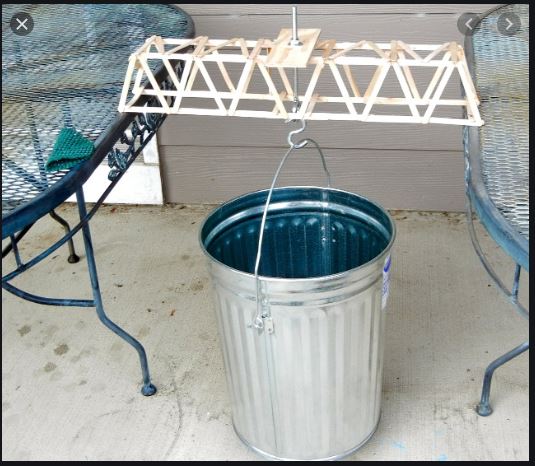
But at the time I met with him and began as his helper, he was using a Pitsco bridge breaking device. Charlie had a piece of plywood on which he had fastened boards. The weight each bridge had broken at was written on a piece of wood and placed on the plywood. As each bridge was broken, the one that withstood the higher load would be moved to the top.
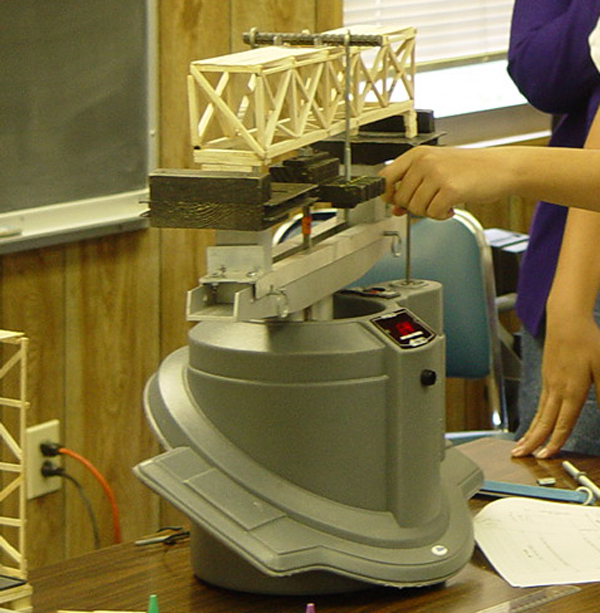
On the new machine, once the bridge was in place the student who built the bridge would lift and plunge a handle attached to an air pump. The pump would increase the weight on the bridge. As the weight increased, at one point the bridge would break. The results were then electronically displayed and projected on the screen.
Charlie and I traveled all over Pinellas and Hillsborough Counties on Saturdays to teach structural engineering to classes of kids in middle and high school.
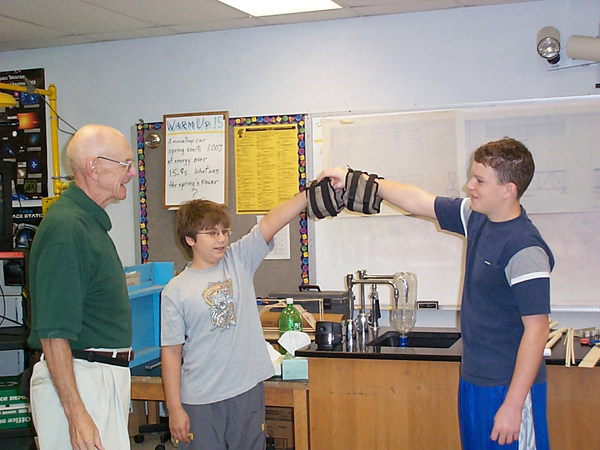
We taught the students what tension and compression were, and demonstrated the effects of each on various materials. It was a three hour long class and it was much appreciated. Charlie and I taught how to cut the balsa wood and how to glue it properly. We explained how to draw the bridge to scale and then build each side of the bridge using the drawing. we taught the structural engineering part – tension and compression. Explaining that the ends of the members in tension need to be held securely and the ends of the members in compression need to be against something strong.

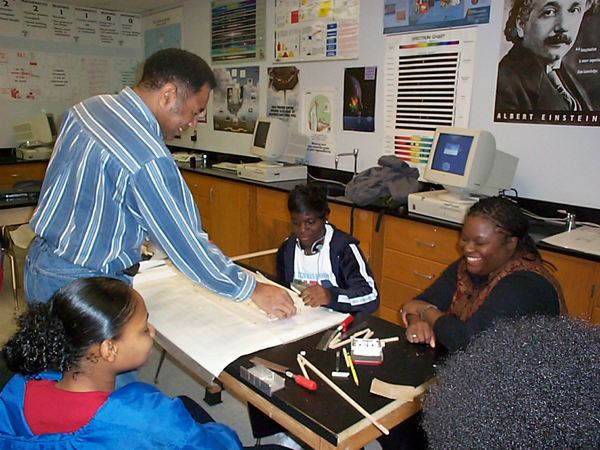
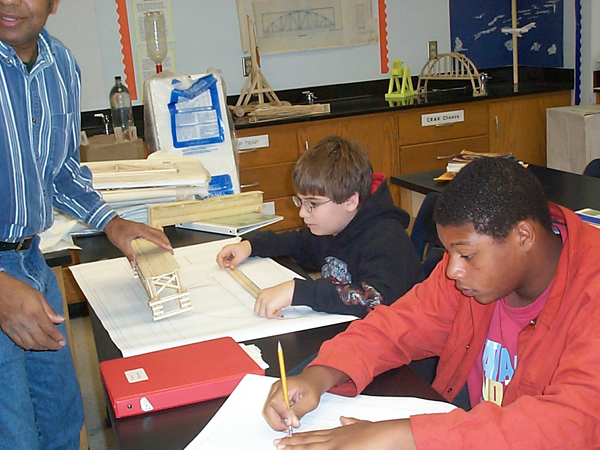
During the year we would teach in the YES program , then the kids would build their bridges. Then in February every year the University of South Florida in Tampa would invite us to come and break the bridges. Bridges would come from all around, including one that was shipped in from Iran!

By the 1980’s we progressed from the manual display to a spreadsheet projected on the screen. We showed first the numbers as the bridge was loaded, then used a graph of the results, then displayed the spreadsheet showing how all the bridges did.
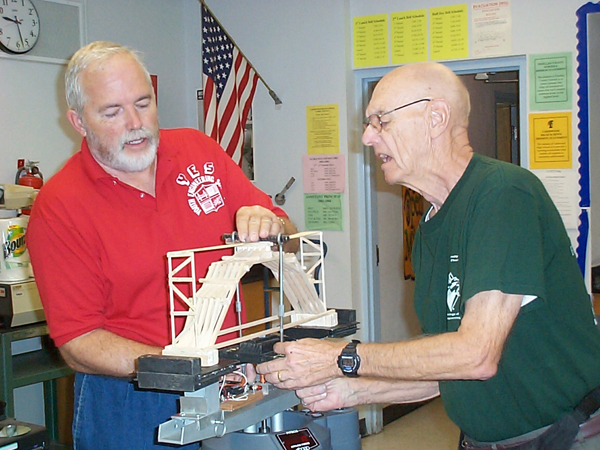
Before the bridges were broken we placed them in a box to insure that they did not exceed the dimensions and had the proper space below for the boat to pass.



In 2003 I downloaded the West Point Bridge Designer computer program, this program is very handy in the design process. I gave copies to many students.
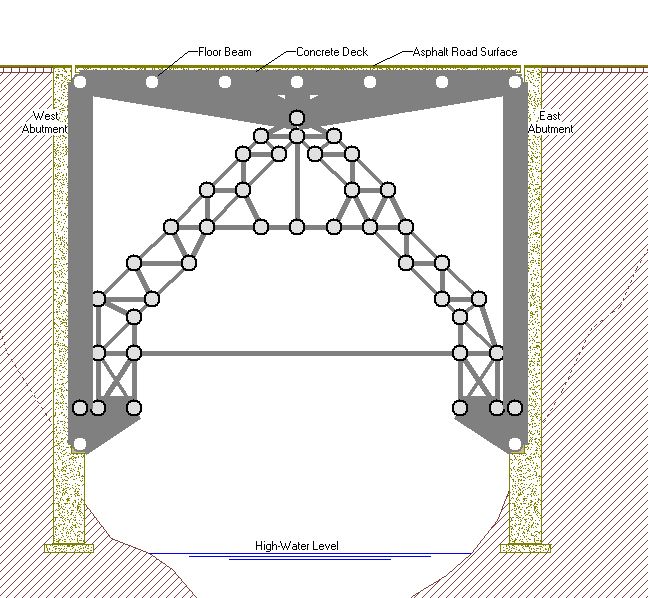
With this program the student can design their bridge on the computer, and then test it to see if it works. The computer then can display which members are in tension and which are in compression, and the amount of stress in each. The student can use this data to strengthen the respective members in the balsa wood bridge as they make it.
By 2015 there was a new $2000 bridge breaker out. USF purchased one and I used it for all bridge breaks. In 2018 USF purchased three more and I gave them back the one loaned to me. Now USF is conducting the entire bridge breaking program.


At one time I was asked to go to Pinellas County Jail to teach the inmates there, it was an interesting juvenile lock-up. When I entered, the guard had me remove the metal holding the eraser on my pencil so that the inmates could not steal the pencil and use the metal for a nefarious purpose. The kids were very interested and some were very intelligent. One inmate designed a bridge on the computer – it looked so good that I built it in balsa wood!
We also were asked to go to a school in Tampa to break their bridges. Charlie had given me the old bridge breaker instrument, and I gave it in turn to the school.
